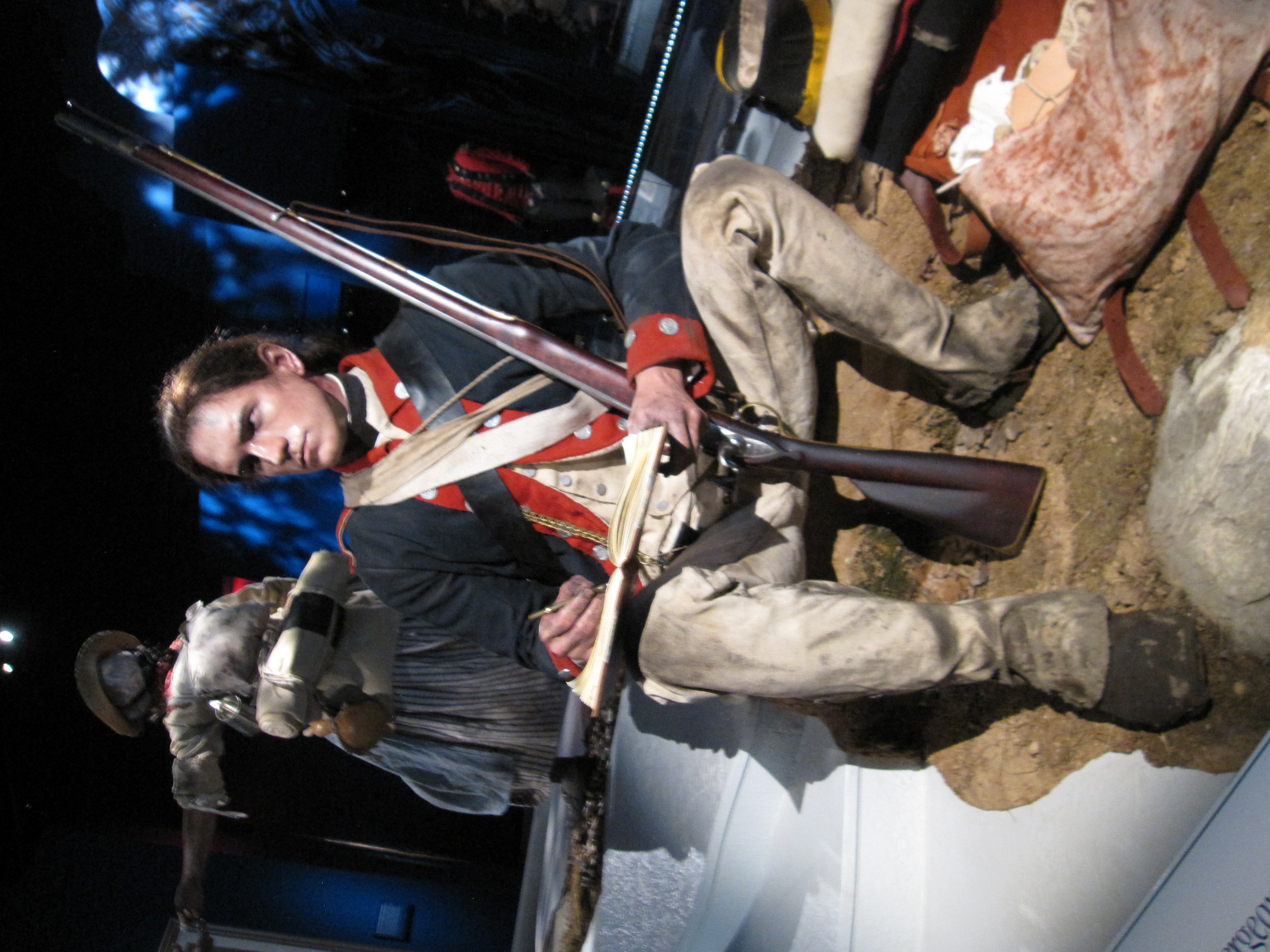Yellowed by time and brown around the edges, the four- by-seven-inch booklet titled “Regulation for the Order and Discipline of the Troops of the United States” helped transform the Continental Army into a strong military force, notes a placard in “Call to Arms, the Soldier and the Revolutionary War,” the exhibit at the National Museum of the United States Army at Fort Belvoir that opened on June 7.
Historians credit the 1779 book, written by Maj. Gen. Friedrich Baron von Steuben, with instilling discipline and training in the colonies’ inexperienced soldiers and call it a manual that led to today’s Blue Book, also displayed, which is mandated reading for all soldiers entering training. Some units of today’s U.S. Army trace their history to the Revolutionary War.
The 5,000-square-foot exhibit has 287 artifacts from the original colonies, England, France and Canada, with many displayed for the first time, including weaponry, uniforms and tools. A six-pound, 1777 Byers gun made in
 US Army museum exhibit
US Army museum exhibit
Visitors learn that before the war, largely untrained, local militias were the colonies’ primary defense. They had no uniforms and showed up “come as you are” carrying weapons like hunting guns and bayonets.
On June 14, 1775, the Continental Congress authorized the establishment of the Continental Army, hence, the exhibit’s opening and celebrations this month. Leading up to that action, discontent had simmered as protests, embargoes of British goods and rebellions against British King George III.
Soldiers’ Perspectives
Caps, hats, epaulets and other accoutrements help tell the story. George Washington’s 1774 gilt brass gorget, engraved with the Virginia coat of arms, still shines as it no doubt did when he wore it around his neck. One of the rarest items, say curators, is the authentic Loyalist uniform of Jeremiah French who remained allied with the British crown. Other uniforms displayed are replicas.
Real show-stoppers are Washington’s actual two gleaming silver-mounted holster pistols and a gold pocket watch he gave to the Frenchman, the Marquis de Lafayette as a thank you for his service at Yorktown.
Several displays are a tutorial in weaponry, like the flintlock blunderbuss, a Jaeger rifle, screw barrel pistols, muskets, scabbards, swords and a Hessian cuttoe. There’s also 18-pound solid shot, grape shot and sliding bar shot. A real “prize” is the sword of British General Cornwallis, presented to Washington at the surrender at Yorktown, Virginia.
The origin of the advice to “keep your powder dry” comes to the fore with multiple powder horns. Soldiers stored their weapons’ black powder in a cow horn with a stopper in the end to keep it dry. Many of the horns have delicately hand-carved, individualized designs.
When on the march, soldiers carried 45 to 60 pounds of gear, like a musket, powder horn, bayonet, knapsack, haversack and blanket. One exhibit features a wooden canteen, wooden snuff box and a swigler for their rum ration. There’re also tools including a knife, axe and digging bar.
Other highlights include the original flag of the 1st Rhode Island Regiment carried by the Army’s first African American soldiers and the 1776 Declaration of War.
A muster roll display informs visitors that in 1776 General Washington handpicked some men to be his personal bodyguards, called the Life Guard, men known for their “sobriety, honesty and good behavior” who protected his letters and the Army’s money. They could be considered precursors to the original Secret Service, the display notes.
Seven cast figures offer the personal perspectives of real individuals in the war, including Daniel Nimham, the last chief of the Wappinger People, who fought with the patriots in Massachusetts, and Anna Maria Lane, one of the few women known to have fought in the war.
In up-close looks at war via videos, museum-goers can go back to the 1775 Battle of Bunker Hill, an intense scene of hand-to-hand fighting; the 1776 New York-New Jersey campaigns; and key battles in the South, including Britain’s 1780 victory, the Fall of Charleston, South Carolina.
The three-week Siege of Yorktown comes to life, where in 1781 General Washington, having marched soldiers 680 miles from New York to Yorktown, led a “textbook operation” and Cornwallis surrendered. “We are at the end of our tether. Now or never our deliverance must come,” Washington wrote.
The rebellion that became a full-scale war, a revolution that changed the world, officially ended in 1783 with the Treaty of Paris.
Information
www.theNMUSA.org
The museum will feature Call to Arms and related events until the summer of 2027.
